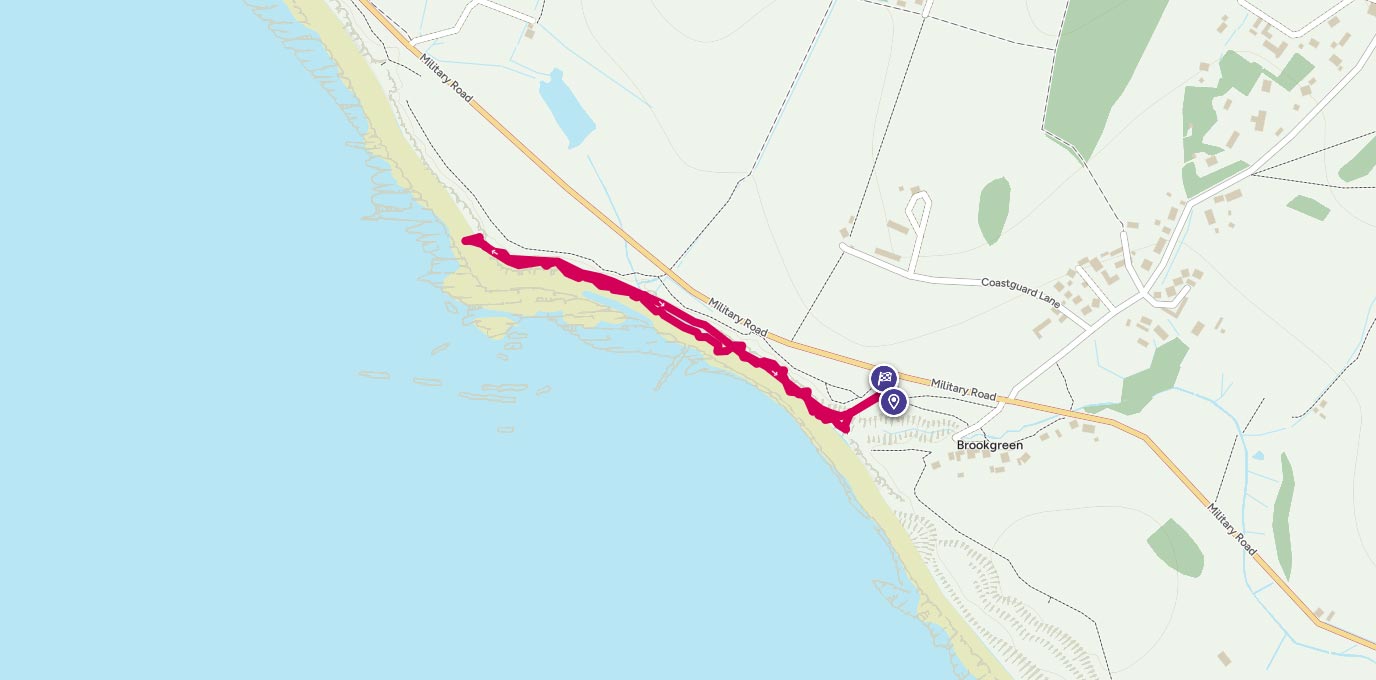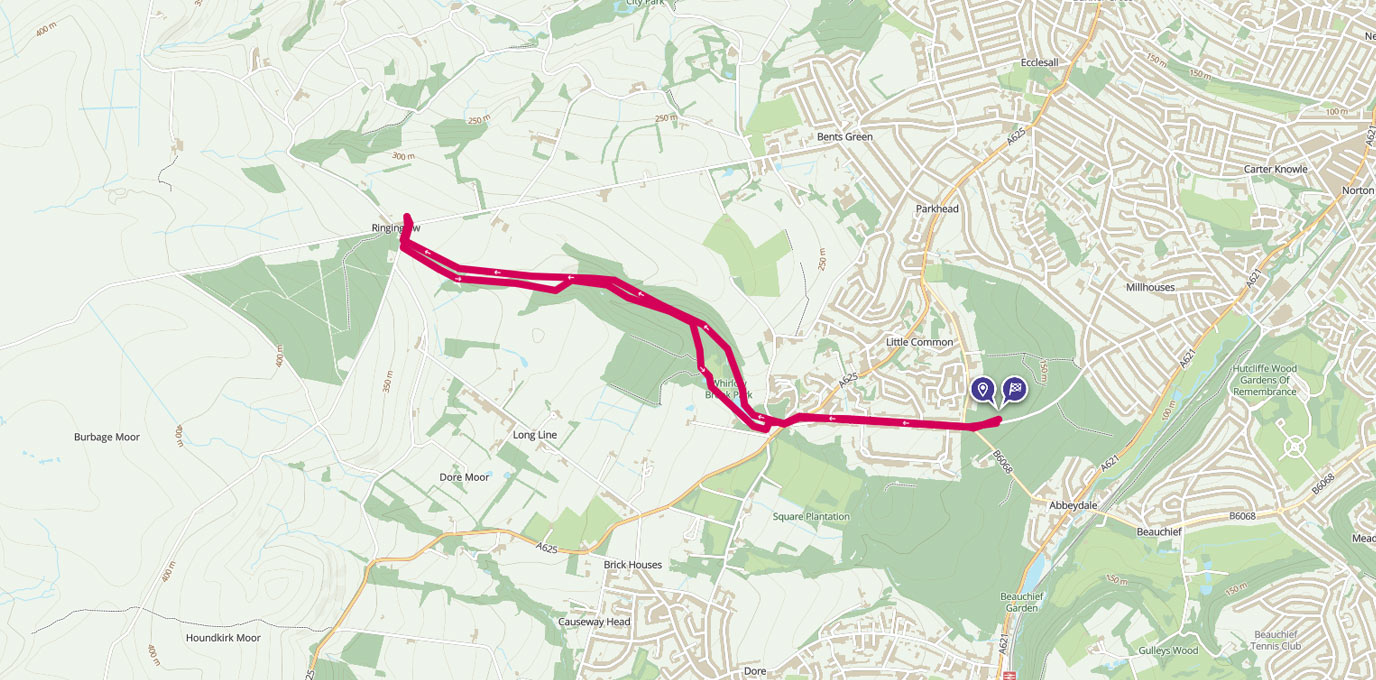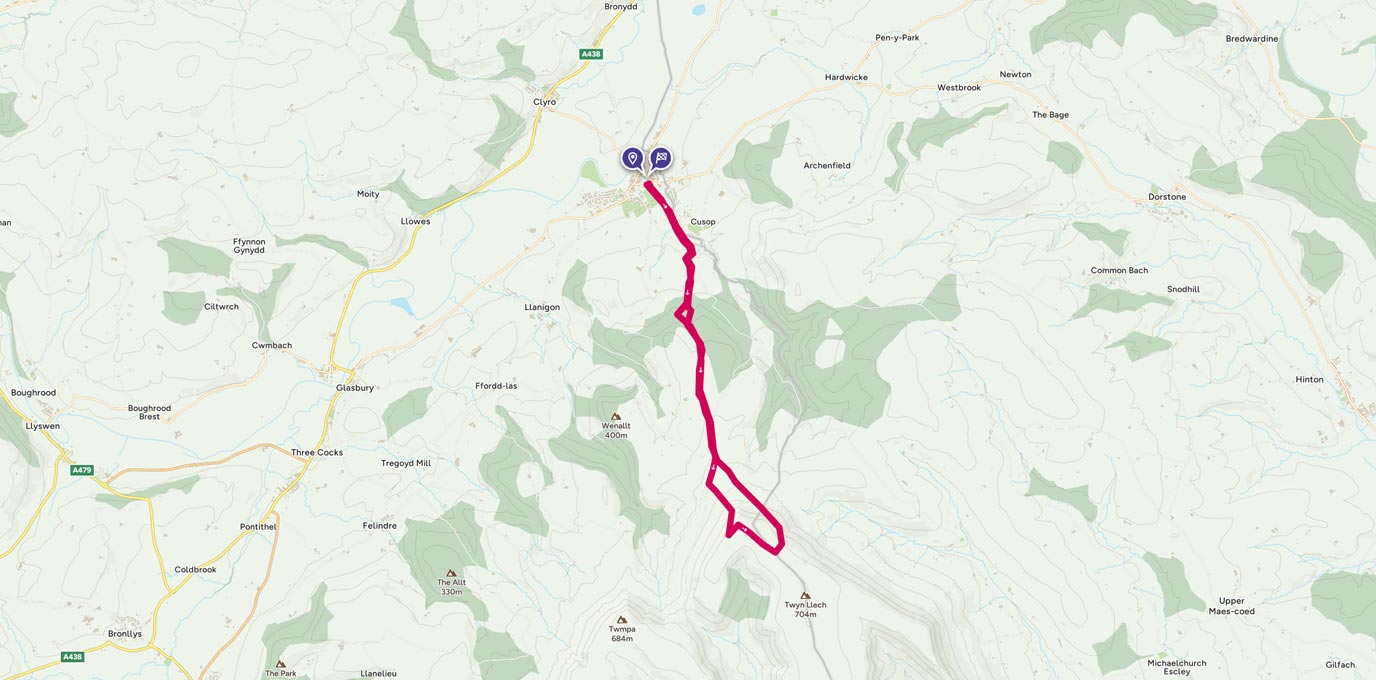Discovering dinosaurs on the Isle of Wight – a jurrasic family beach adventure
SX 386 836
We started off at the car park on the A3055 coastal Military Road between Brightstone and Freshwater bay. The car park is run by the National Trust (£2.60 for all day, free to members).
Here we met Flic from Island Gems, who was a professional fossil hunter and our guide for the day. We started off with some information on the area and it’s importance in historic fossil finds and also that this part of the coast is known for remains from shipwrecks. She also pointed out Brook House, home of English poet Lord Tennyson and visited by Italian General Garibaldi.
29 different species of dinosaur from various eras have been discovered on The Isle of Wight (which we were told was unusually high for such a small area) so our hopes were high.
From the car park, head down the ramp towards the beach. You can see the effects of erosion immediately, as the ramp is suddenly cut off where the coast was battered over winter. While the whole area is great for finding fossils, we turned right on reaching the beach to find a special fossil.
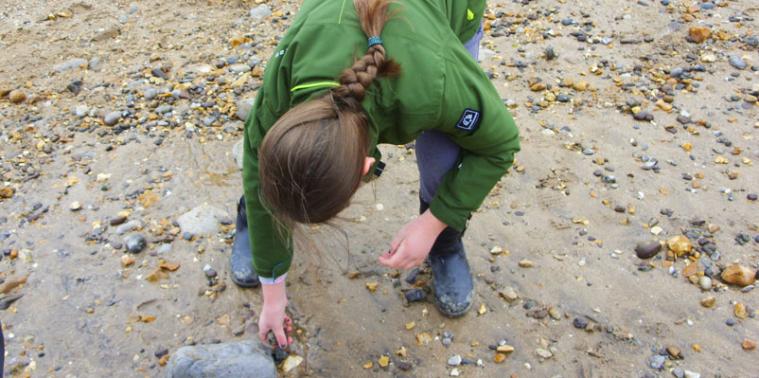
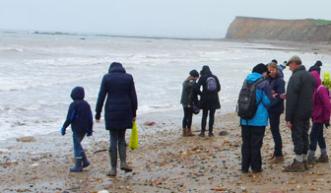
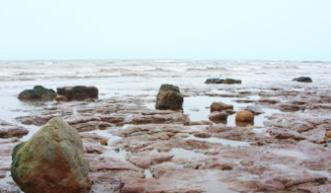
As we made our way we were encouraged to check the loose stones lying on the beach for fossils. As you would expect, they can be tricky to spot, but we were given a few pointers to help us out:
- Rocks with hollows, sometimes with crystal inside, are where soft-bodied creatures such as sponges have left a space
- Dark rocks with regular lines running through them are fossilised trees
- Dark rocks with lots of white flecks and lines are fossilised oyster beds full of crushed shell
- Dark or black rocks with small patterns like dots or honeycomb are dinosaur bones
- Small flints with one flat face and sharp, serrated edges are likely neolithic tools
Having a professional on-hand was a big bonus in distinguishing between different types of fossils and in one case, identifying a piece of very weathered tarmac.
The best places to look for fossils were right down on the shore line. Our trip was timed to cover the beach as the tide was retreating, and new areas were uncovered to give us the best chance of finding something new. Slightly higher up the beach, at the high tide mark, there is a line of shingle pulled from the cliffs where neolithic finds appear. You don’t need a hammer as the fossils you are likely to find will be exposed anyway.
Further down the beach (at SZ 380 837, although it may move!) we were shown the impressive finds we had been promised. There were several what appeared to be large rocks, but were actually the casts of ancient dinosaur footprints.
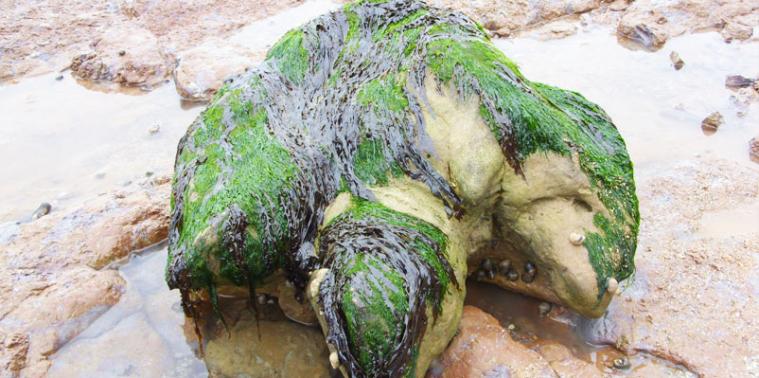
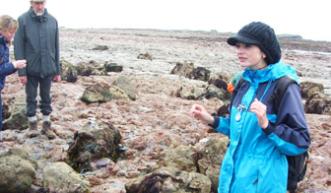
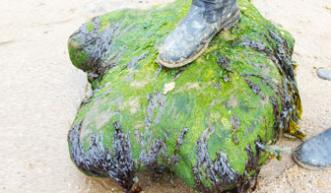
There were a number of these scattered on the beach. To find them, look for large rocks with three or four points on one face. We found a four toed brachiosaurus footprint and several three toed iguanodon footprints during our explorations, but of course these are likely to be moved by the sea – you’ll have to go looking for them!
They are created where the dinosaurs stepped in soft mud, leaving a deep impression. Over time, the impression filled with fresh sediment that hardens into a distinct rock, and is buried deep underground. Millennia later, the ground is eroded by the sea, and the cast of the footprint is exposed.
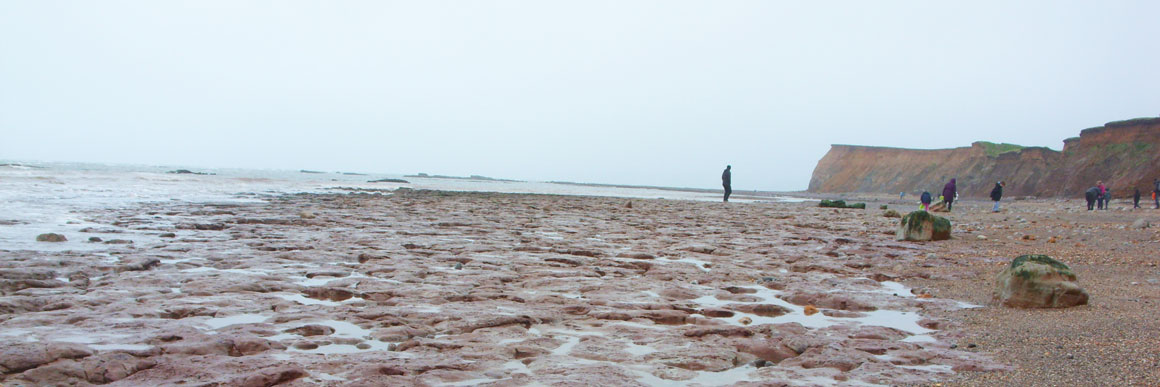
We returned with a bag full of fossils (unfortunately none were of any scientific significance!) including a small fragment of bone, a large piece of fossilised wood and lots of smaller wood fragments, shell beds, sponge remains and similar.
As this area is not Site of Special Scientific Interest, you are free to take any specimens you can carry home. If you do find anything that looks especially interesting most museums or fossil traders will be able to help you identify them. We were told the best way to preserve them was with a thin coating of PVA glue, although clear varnish should also prevent some of the more delicate fossils from flaking or crumbling.
Useful info
-
- Island Gems runs guided fossil hunts all year round – see here for details
-
- You don’t need any special equipment – just a bag or bucket to carry your finds
-
- Try to arrive as the tide is going out – see here for tide times
-
- Keep away from the cliffs, as they are very soft and can collapse if you try to pull rocks out
1.8km SX 386 836
1.8 km / 1 miles
